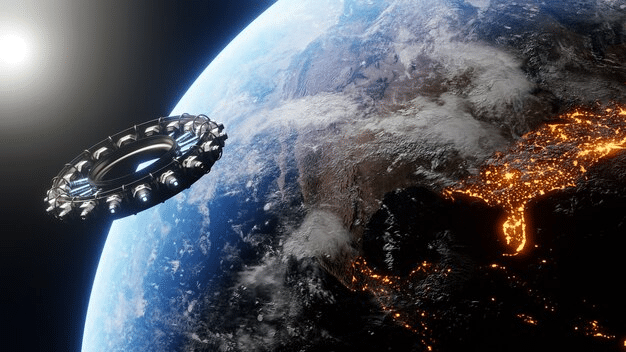Space exploration has come a long way since the first manned missions to the Moon. With the rapid advancements in technology, humanity is now looking beyond the Moon to explore Mars, asteroids, and even the outer reaches of our solar system. Technology plays a pivotal role in shaping the future of space exploration by improving spacecraft, enhancing communication systems, increasing the efficiency of missions, and helping scientists to better understand distant worlds. In this article, we’ll explore the critical role of technology in advancing space exploration and the exciting innovations that are driving the industry forward.
1. Advancements in Propulsion Systems

Faster and More Efficient Space Travel
One of the most significant challenges in space exploration is the vast distances between celestial bodies. Traditional propulsion systems, like chemical rockets, have limitations in terms of speed and efficiency. However, new technologies are pushing the boundaries of what’s possible.
- Ion Propulsion: Ion thrusters are more efficient than chemical propulsion, providing continuous thrust over long periods. This allows spacecraft to reach distant destinations like Mars or even the outer planets more quickly, without the need to carry massive amounts of fuel.
- Nuclear Thermal Propulsion: Nuclear propulsion systems, still in development, promise to drastically reduce travel time to distant destinations, making interplanetary travel more feasible. By using nuclear reactions to heat a propellant, this system can produce much greater thrust than traditional methods.
- Solar Sails: Solar sail technology, which uses radiation pressure from sunlight to propel spacecraft, offers the potential for continuous propulsion without fuel, allowing spacecraft to travel long distances for extended periods.
2. Robotic Exploration
Exploring Without Human Presence
Robotic spacecraft and rovers have been crucial to the exploration of the Moon, Mars, and other celestial bodies. These machines allow scientists to gather valuable data without putting astronauts at risk.
- Mars Rovers: NASA’s Perseverance rover and China’s Zhurong rover are examples of robots that have been sent to Mars to collect data, study the environment, and search for signs of past life. These rovers are equipped with advanced cameras, drills, and scientific instruments to analyze soil samples and even take video footage from the surface of Mars.
- Space Telescopes: Telescopes like the Hubble Space Telescope, and the James Webb Space Telescope (JWST), are providing us with unprecedented views of distant galaxies and exoplanets. These space-based observatories enable astronomers to explore the far reaches of space without the limitations of Earth’s atmosphere.
3. Artificial Intelligence (AI) in Space Exploration
Autonomous Decision Making and Data Processing
Artificial intelligence (AI) is transforming how space missions are conducted, making them more efficient and less reliant on human intervention. AI can help with navigation, data analysis, and mission management.
- Autonomous Navigation: AI systems can enable spacecraft to make real-time decisions during their journeys. For example, AI algorithms are used to help autonomous spacecraft avoid obstacles, make course corrections, and optimize flight paths without needing constant commands from Earth.
- Data Analysis: Space missions generate massive amounts of data, and AI is increasingly used to analyze this data more efficiently. By using machine learning algorithms, AI can identify patterns, process images, and even predict scientific phenomena, which aids in faster discovery and decision-making.
4. Advanced Communication Systems
Staying Connected with Distant Spacecraft
One of the challenges of space exploration is the vast distances that spacecraft must travel, which can lead to communication delays. Advanced communication technologies are crucial to maintaining contact with space missions and relaying data back to Earth.
- Deep Space Network (DSN): NASA’s DSN uses large radio antennas around the world to communicate with spacecraft. The network allows for two-way communication with distant spacecraft and enables the transmission of data such as images, scientific readings, and health reports from probes and rovers.
- Laser Communication: Laser-based communication systems, which use beams of light to send information at much higher speeds than radio waves, are being developed to replace traditional radio communication. These systems could enable faster data transmission over vast distances, improving mission efficiency.
5. Space Habitats and Life Support Systems
Sustaining Human Life in Space
As humanity plans missions to Mars and beyond, it becomes increasingly important to develop life support systems that can sustain astronauts for extended periods in space. Innovations in space habitats and life support technology are vital to long-duration missions.
- Closed-Loop Life Support Systems: These systems recycle air, water, and waste products, allowing astronauts to live in a self-sustaining environment. NASA’s Biosphere 2 experiment, as well as advancements aboard the International Space Station (ISS), have helped refine these technologies, making them crucial for future deep-space missions.
- Space Habitats: Developing artificial habitats that can protect astronauts from the harsh conditions of space—such as radiation, extreme temperatures, and microgravity—is a key focus for space agencies. Research into inflatable habitats, like NASA’s Bigelow Expandable Activity Module (BEAM), offers a lightweight and expandable solution for future space stations or Mars habitats.
6. 3D Printing in Space
On-Demand Manufacturing in Space
3D printing, also known as additive manufacturing, has the potential to revolutionize how we build and repair equipment in space. Instead of relying on sending supplies from Earth, astronauts could use 3D printers to create tools, parts, and even food from raw materials found in space.
- Building Structures on Mars: 3D printing could play a critical role in constructing habitats, landing pads, and other infrastructure on Mars. By using Martian soil as a raw material, astronauts could print building materials directly on the planet’s surface, reducing the need for transporting construction materials from Earth.
- Repair and Maintenance: Spacecraft and space stations often require repairs, and 3D printing could enable astronauts to print replacement parts on-demand, allowing for quick fixes without waiting for resupply missions.
7. Space Mining and Resource Utilization
Utilizing Space Resources for Sustainability
As space exploration advances, the idea of mining resources from asteroids and other celestial bodies is gaining traction. These resources could be used to support long-term space missions and alleviate the need to bring resources from Earth.
- Asteroid Mining: Companies like Planetary Resources and Deep Space Industries are exploring ways to mine precious metals, water, and other materials from asteroids. These resources could support lunar bases, Mars missions, or even be used to build spacecraft in orbit, eliminating the need to launch heavy payloads from Earth.
- In-Situ Resource Utilization (ISRU): NASA and private companies are investigating how to use local resources, such as water ice found on the Moon or Mars, to produce fuel, oxygen, and water. ISRU technologies could dramatically reduce the costs and logistical challenges of deep space missions.
8. Commercial Space Industry
Private Sector’s Role in Space Exploration
The rise of private space companies has significantly changed the landscape of space exploration. Companies like SpaceX, Blue Origin, and Rocket Lab are advancing technologies that allow for cheaper and more frequent access to space.
- Reusable Rockets: SpaceX’s development of reusable rockets has drastically lowered the cost of space travel. By landing and reusing rockets, these companies reduce the financial barriers to entry for space missions, opening up new opportunities for exploration and commercial space ventures.
- Space Tourism: The development of space tourism by companies like Virgin Galactic and Blue Origin is helping fund research and technology that will ultimately benefit scientific missions, space colonization, and the long-term sustainability of space exploration.
Conclusion
Technology is the cornerstone of space exploration. From advanced propulsion systems and AI-driven robotics to life support technologies and commercial space initiatives, innovations in technology are continually expanding humanity’s capabilities in space. As we move closer to establishing a permanent presence on the Moon, Mars, and beyond, these technologies will be essential for overcoming the challenges of interplanetary travel, sustaining human life, and unlocking the secrets of the cosmos. The future of space exploration is bright, and with continued technological advancements, the possibilities are truly limitless.
FAQs
Q1: How does AI assist in space exploration?
AI helps in space exploration by enabling autonomous spacecraft navigation, real-time decision-making, and efficient data analysis. AI-powered systems can process large amounts of data quickly, identify patterns, and make decisions that would otherwise require human intervention.
Q2: What is in-situ resource utilization (ISRU)?
ISRU refers to the process of using local resources found on celestial bodies like the Moon or Mars to support human missions. This includes using materials such as water, minerals, and soil to produce fuel, oxygen, and building materials, reducing the need for supplies from Earth.
Q3: What role does 3D printing play in space missions?
3D printing enables astronauts to manufacture tools, parts, and even food directly in space, using raw materials available in space or brought from Earth. This reduces the need for resupply missions and allows for more flexibility in managing resources.
Q4: Why is space mining important for the future of space exploration?
Space mining offers the potential to harvest resources like water and precious metals from asteroids, which could support long-term space missions. This reduces dependency on Earth and could help sustain bases on the Moon or Mars.
Q5: How has the commercial space industry impacted space exploration?
The commercial space industry has lowered the cost of space travel through innovations like reusable rockets. Companies such as SpaceX and Blue Origin are making space exploration more accessible and frequent, opening up new opportunities for scientific research, commercial ventures, and space tourism.


